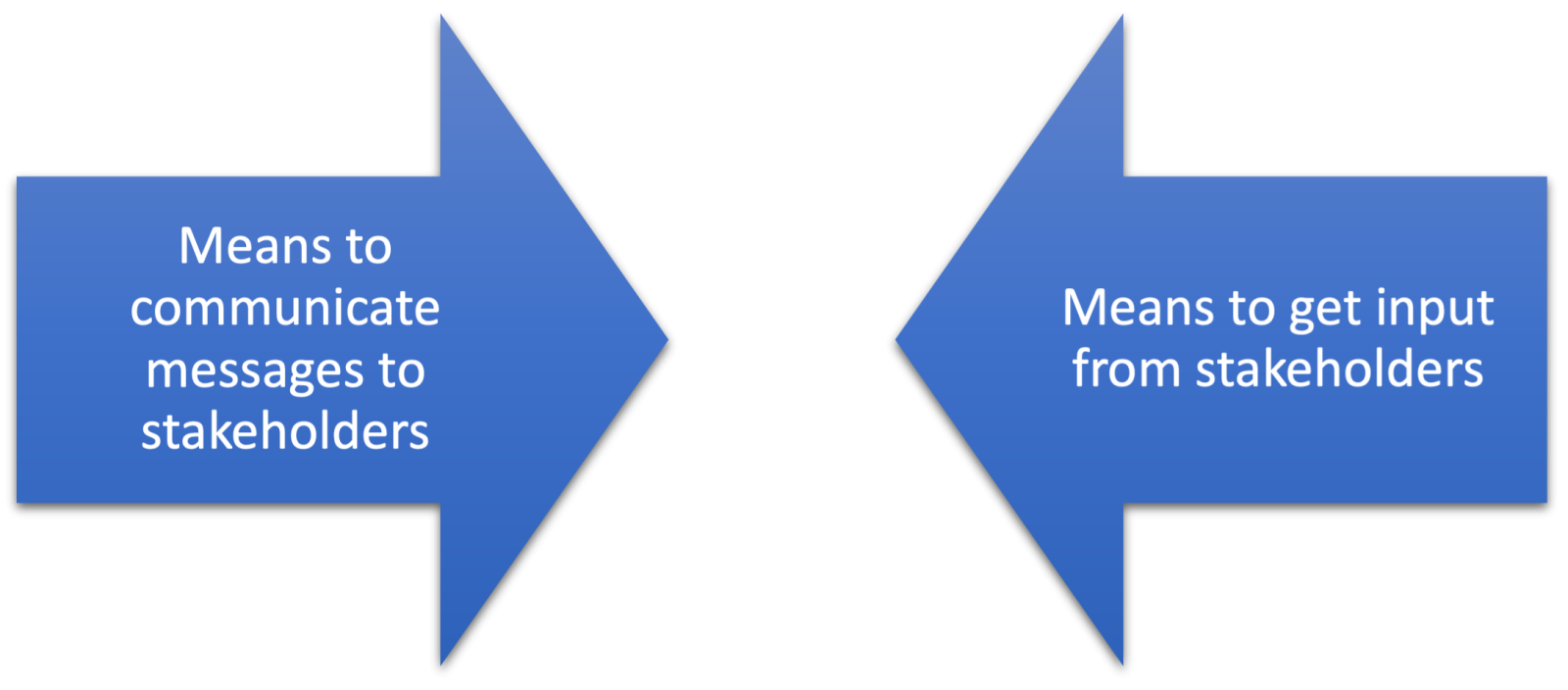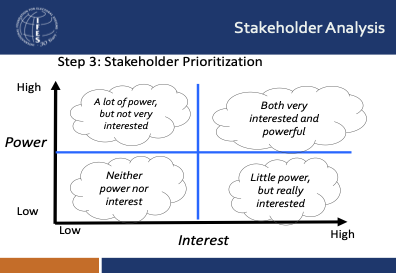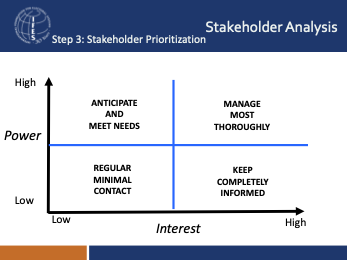2.6 Stakeholder Engagement
2.6.1 What is stakeholder engagement and why is it important for political finance oversight institutions?
Political finance regulation is of interest to many stakeholders, and not all of their interests will be the same. For example, political parties and candidates may not share the same interest in transparency as civil society organisations, and academics may have a different perspective on what constitutes adequate transparency than that held by journalists. Political finance regulators need to understand different stakeholder perspectives to reach the best decisions. This will sometimes involve compromise, and not every stakeholder will be satisfied every time with the decisions taken.
Understanding stakeholder views is therefore vital and is primarily achieved through engagement. From the outset, stakeholder engagement should be viewed as a 2-way process. It enables you, as the oversight institution, to communicate key messages to stakeholders and it provides you with a means to get input from them that can make your job easier and/or more effective.
Stakeholder engagement can be defined as “the systematic identification, analysis, planning and implementation of actions designed to influence stakeholders.” It is a structured process used to achieve a better understanding of the different perspectives, needs and motivations of those with an interest in your organisation. This understanding can then inform how best to engage with each stakeholder. The importance of solid stakeholder engagement should not be underestimated for political finance oversight bodies, as it can be an effective tool to:
- Help ensure high rates of compliance by those who must comply with the law
- Increase visibility and educate voters about money in politics and how it is regulated;
- Garner support from government sources for resources or changes in the law; and
- Promote good working relationships with other public institutions.
How to develop a stakeholder engagement plan?
The first step is to undertake a stakeholder analysis - a technique used to identify who is affected by the oversight institution’s work and how best to engage with them. This process will help you think about how to:
- gain support of key people/groups (or minimise their opposition);
- draw on their input to make your work more successful, and
- allocate your time and efforts.
The second phase of developing a stakeholder engagement plan consists of using the results of the stakeholder analysis to prioritise which stakeholders warrant the most of your attention. Those who rate as having both the greatest interest and the greatest influence will be the stakeholders you need to focus on the most. By contrast, those who have the lowest level of interest and the least amount of influence may only require minimal, regular contact.
Having prioritised your stakeholders, you will need to come up with a plan for how to engage with each of them. In developing the plan, it is important to learn more about each stakeholder’s interests, what they want from you and the type/method of engagement that suits them. It is also relevant to consider how they can help/harm your work overseeing political finance, and having done so, to assess what type of information you wish to share with them. And, finally, it good to consider whether to formalise your engagement arrangements. There are a variety of ways to do so ranging from a formal Memorandum of Understanding (often used when the stakeholder is another public body) to regular, periodic meetings (often used with political party panels).
In addition to your general engagement plan for key stakeholders, it can be very beneficial to develop stakeholder engagement plans for specific projects or events. Such targeted plans help ensure that you consider all key stakeholder issues arising from the specific project or activity in question (see Stakeholder engagement template.pdf and Hypothetical stakeholder engagement plan.pdf).
2.6.2. Undertaking a stakeholder analysis
The first step is to identify your stakeholders. Ask yourself:
- Who is influenced/affected by the work of the oversight body?
- Who has influence/power over you?
- Who is interested in what you do?
There is no one set of answers to these questions that will apply to all political finance oversight institutions. However, it would be likely that these questions would generate a list that would include amongst others: political parties, candidates and other regulated entities; civil society organisations, media and investigative journalists, ministers and parliamentarians, academics and voters. Of course, these are just examples but you will definitely want to add to and subtract from this list depending on your situation.
The second step is to consider each stakeholder’s role by asking yourself:
- How is each stakeholder affected by our work?
- Why are they interested in our work (e.g., what motivates them)?
- What influence do they have over us?
- Who are our natural supporters and who are the key challengers?
The third step of a stakeholder analysis is to chart your stakeholders on the following grid according to their respective levels of interest and power:
Having plotting out your stakeholders on the graph based on their influence over your institution and their level of interest in your work, you can begin to prioritise the level of engagement each requires, using the grid below:







